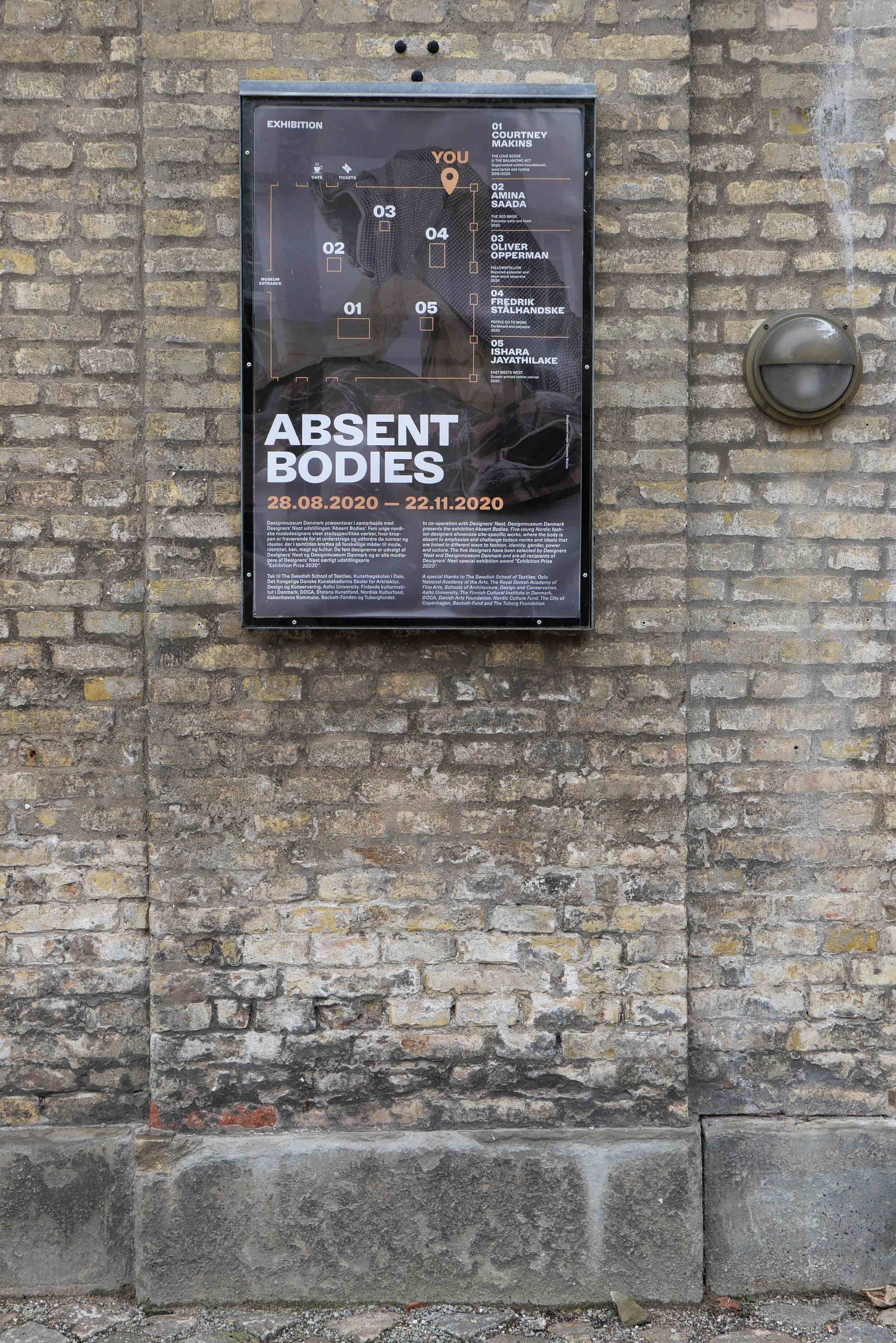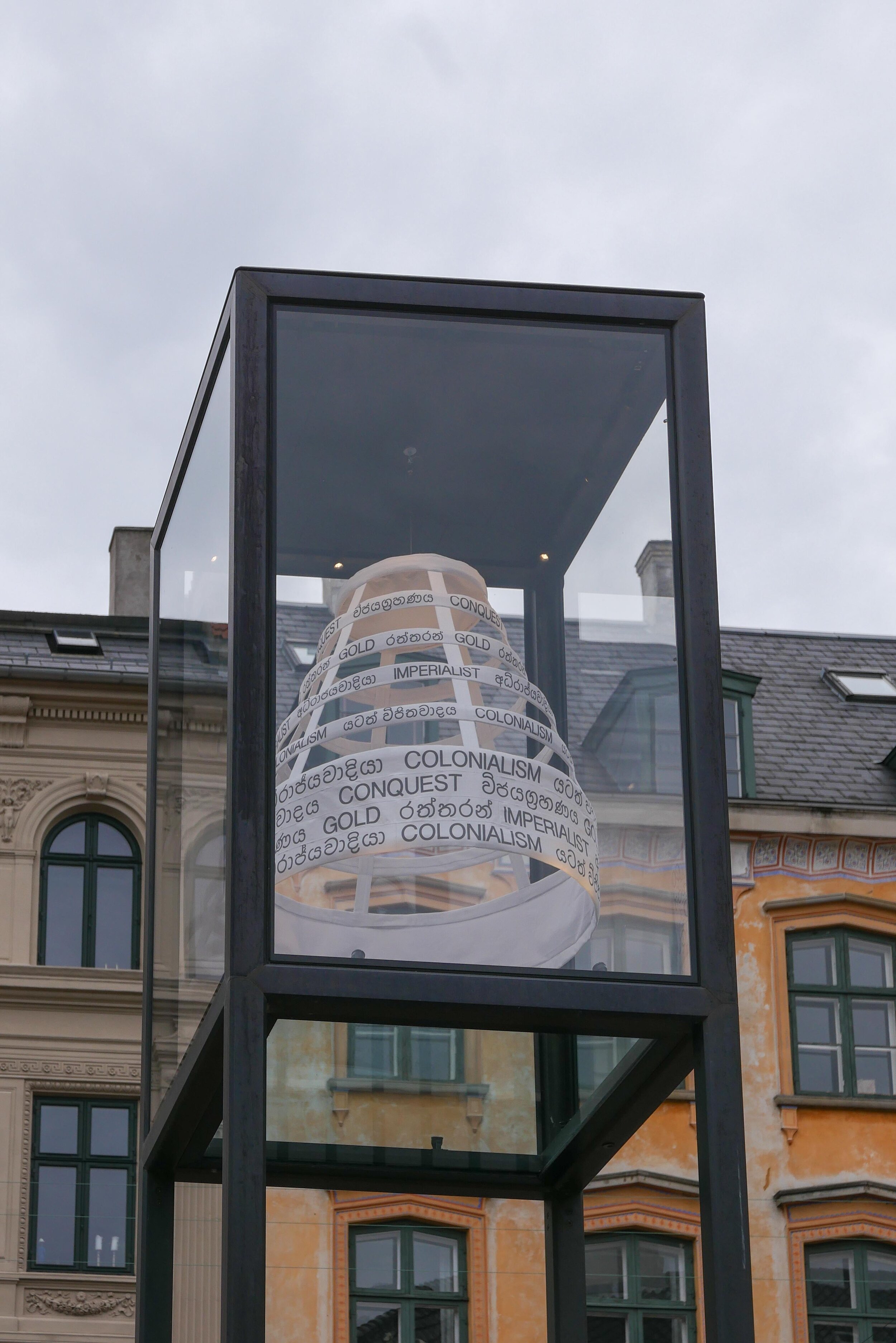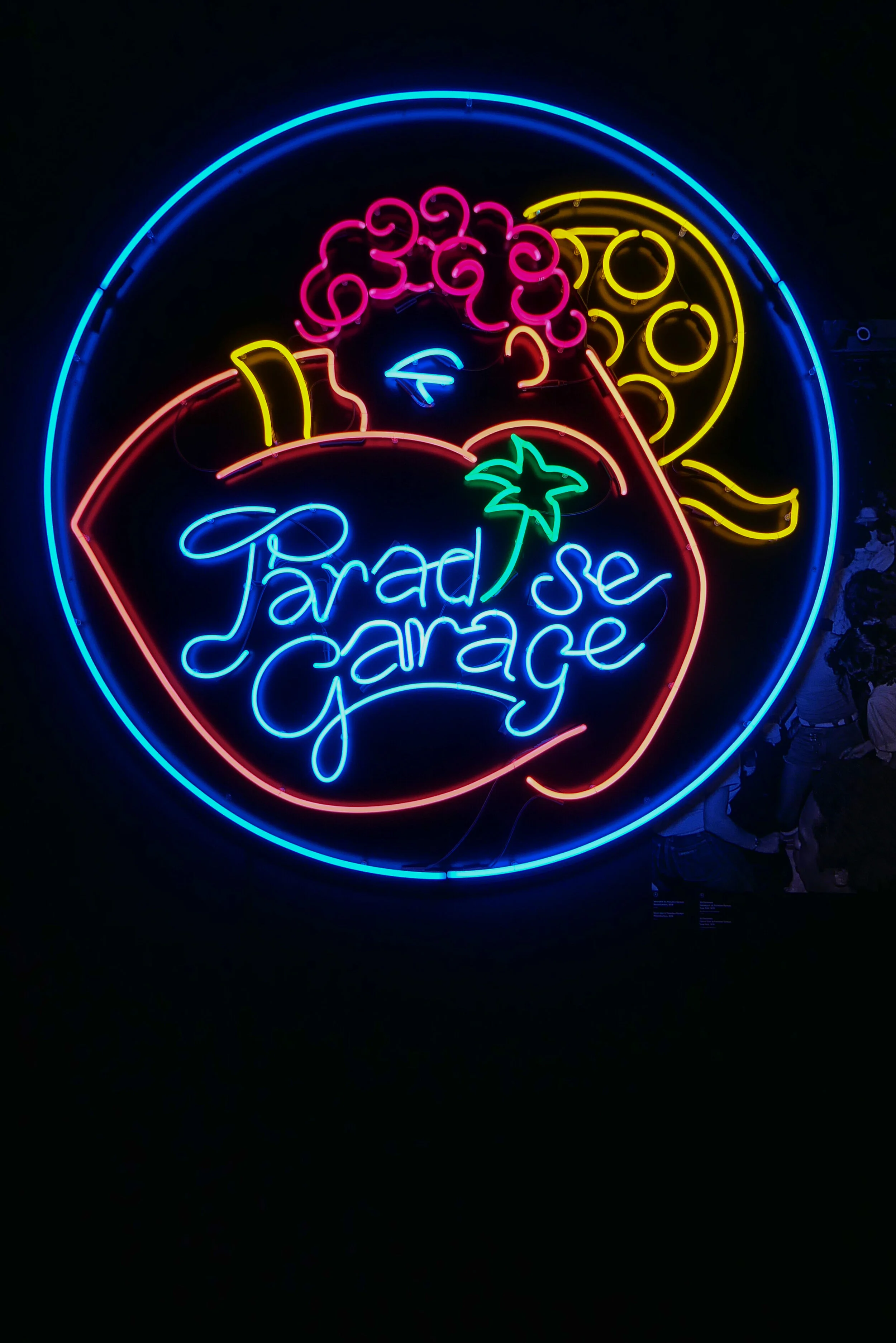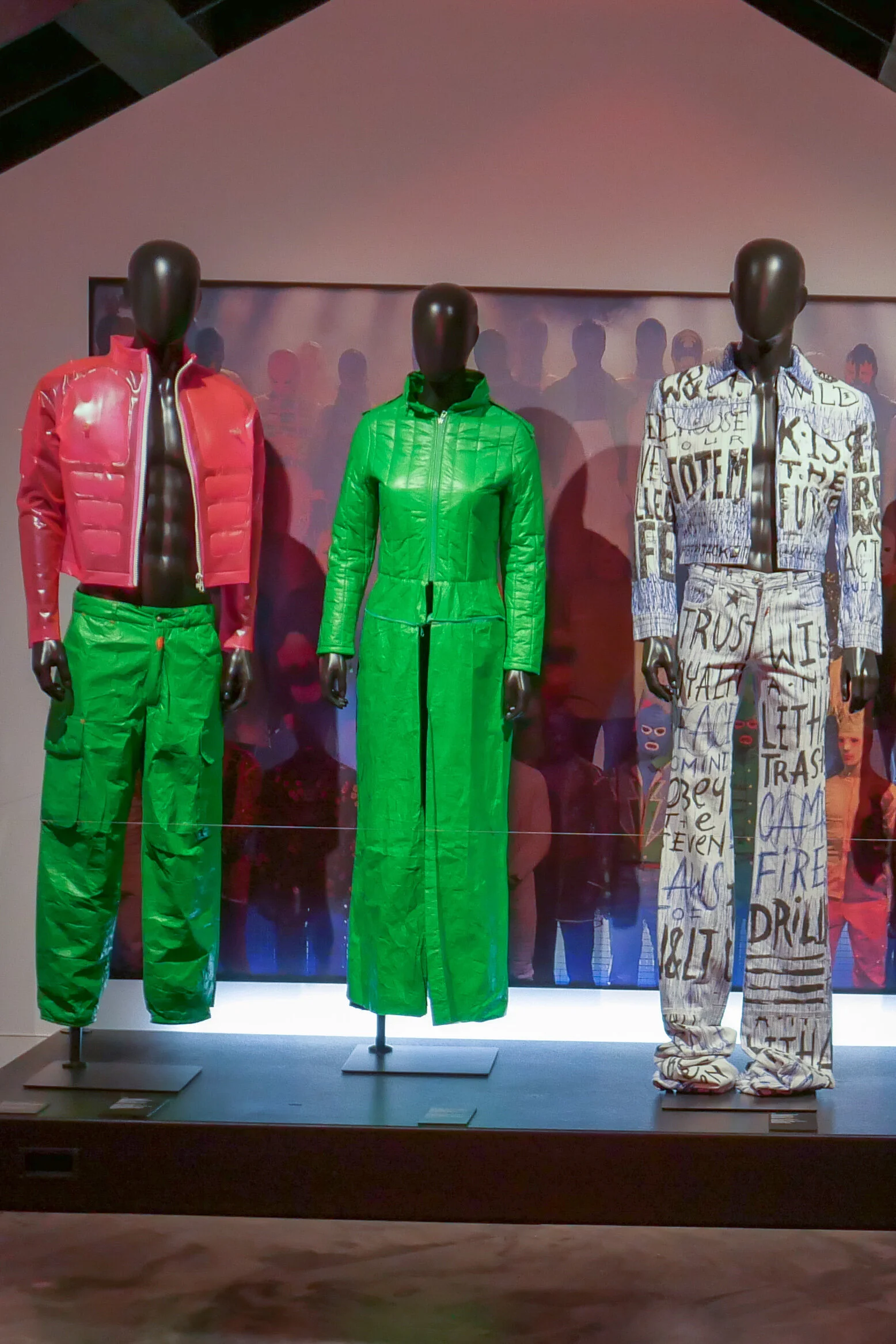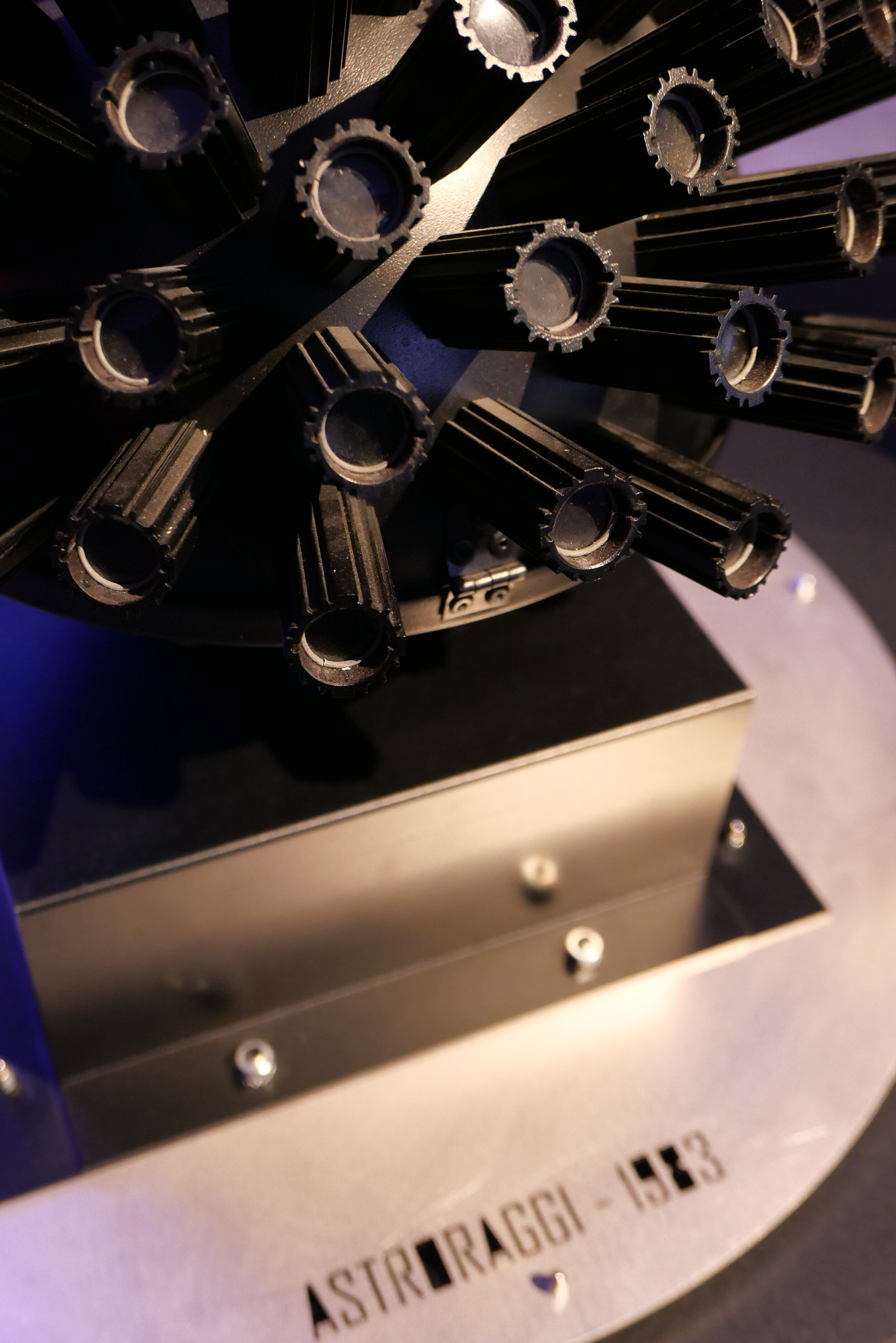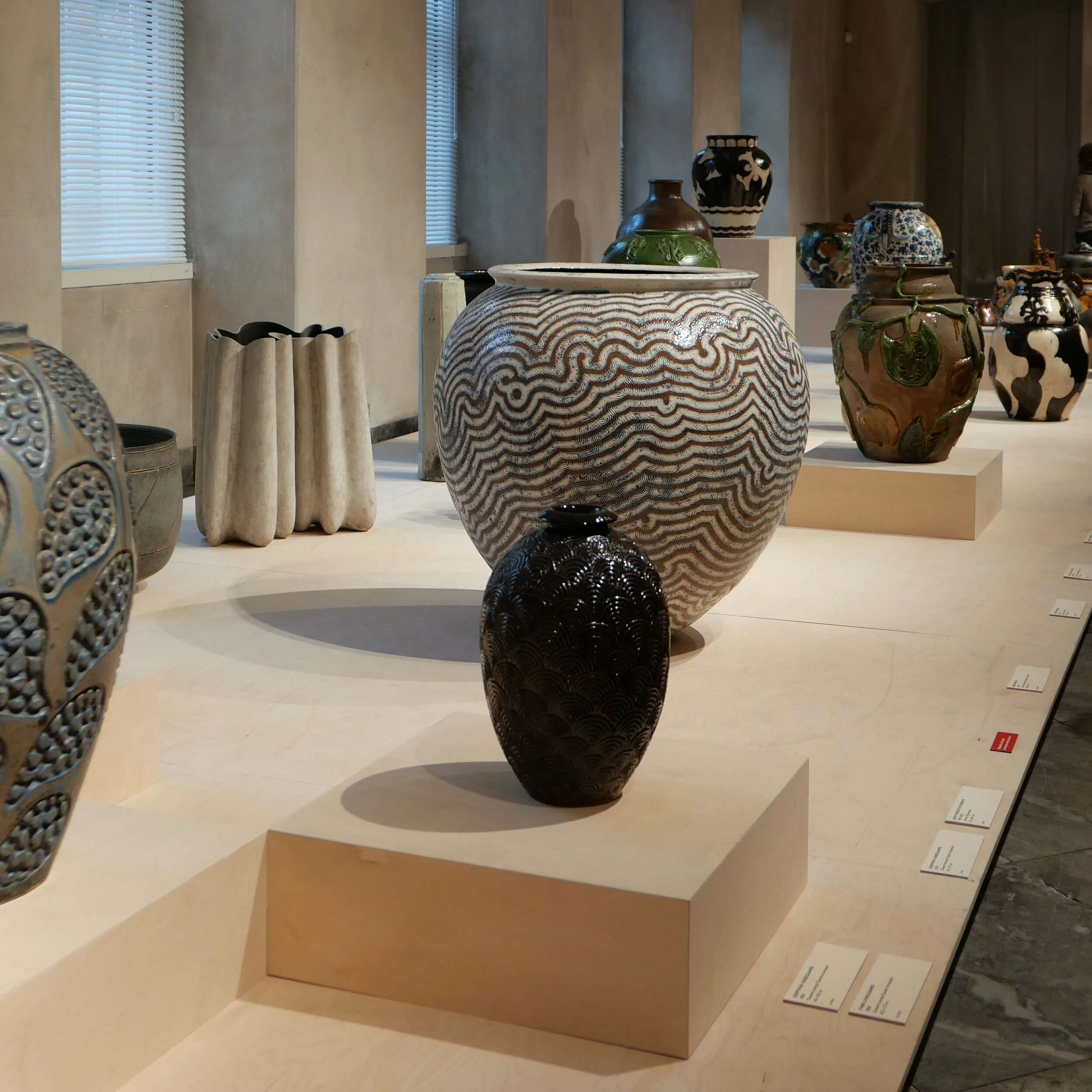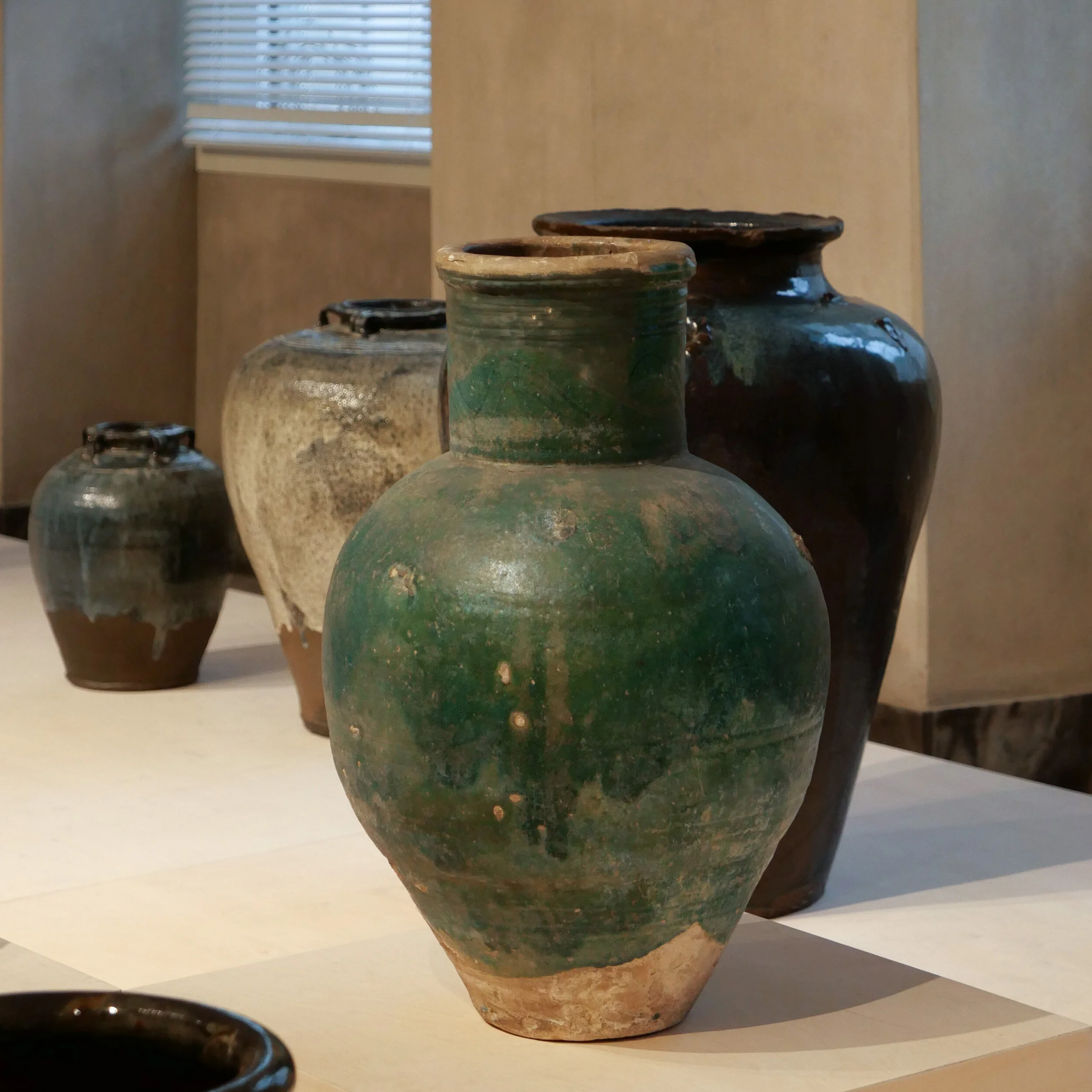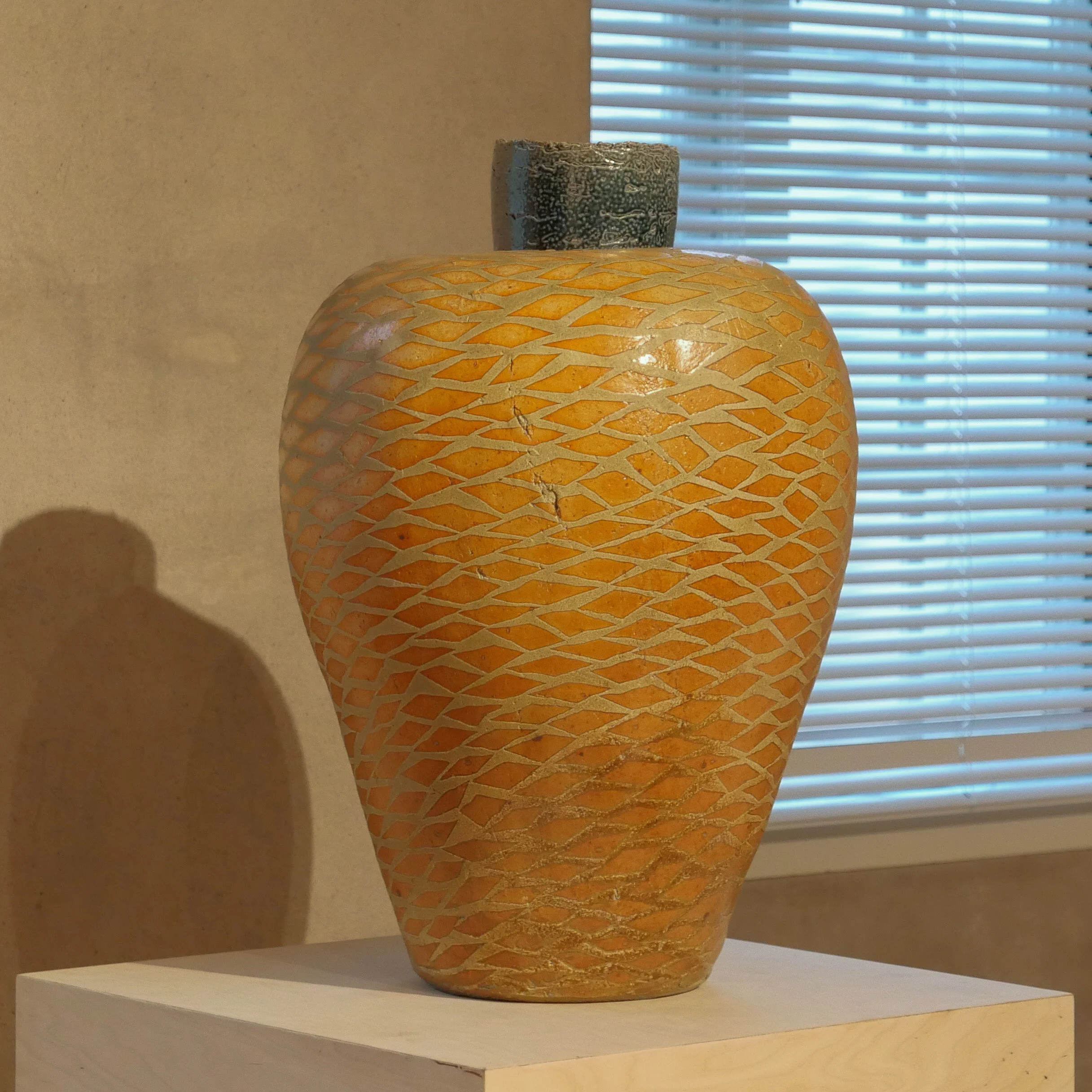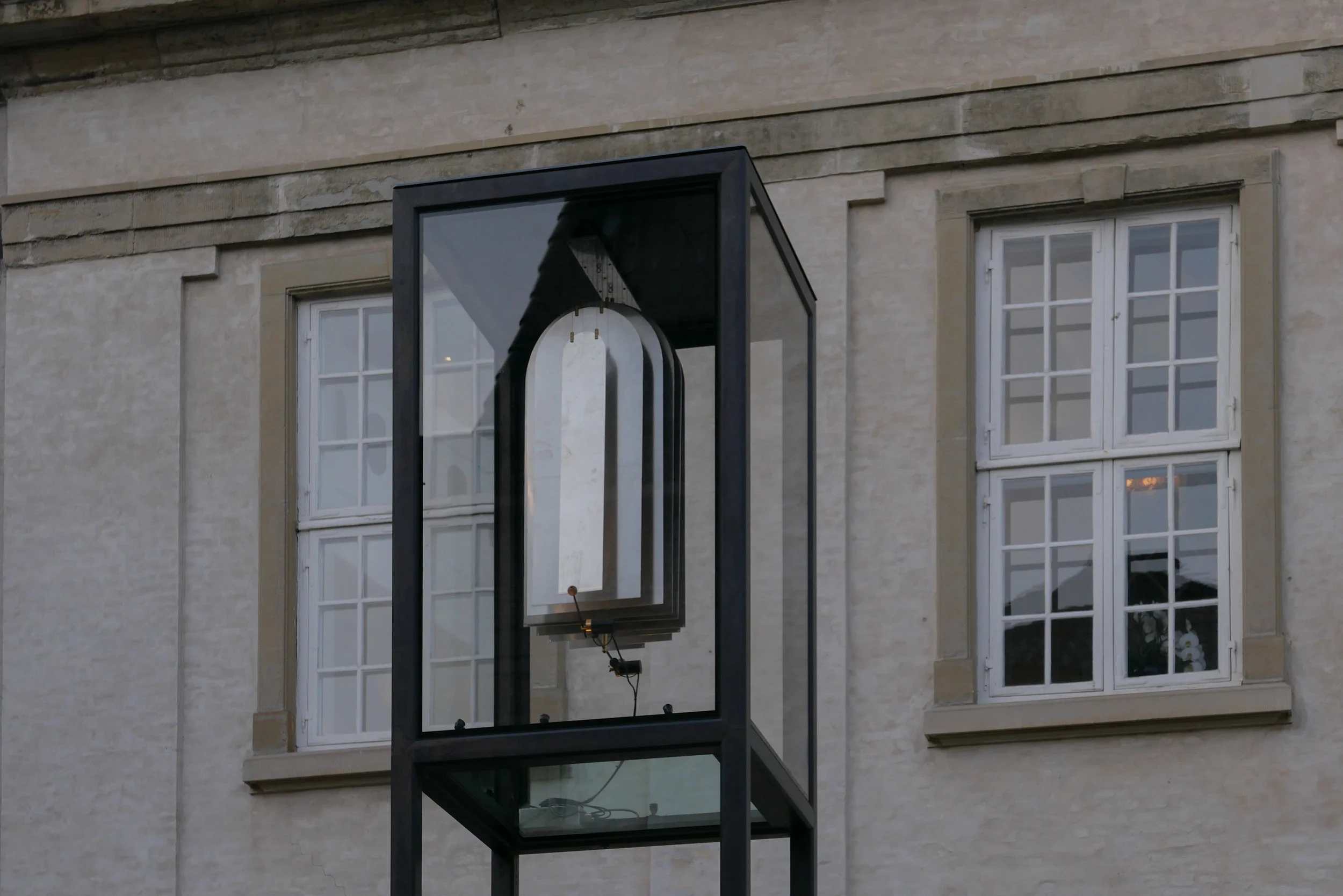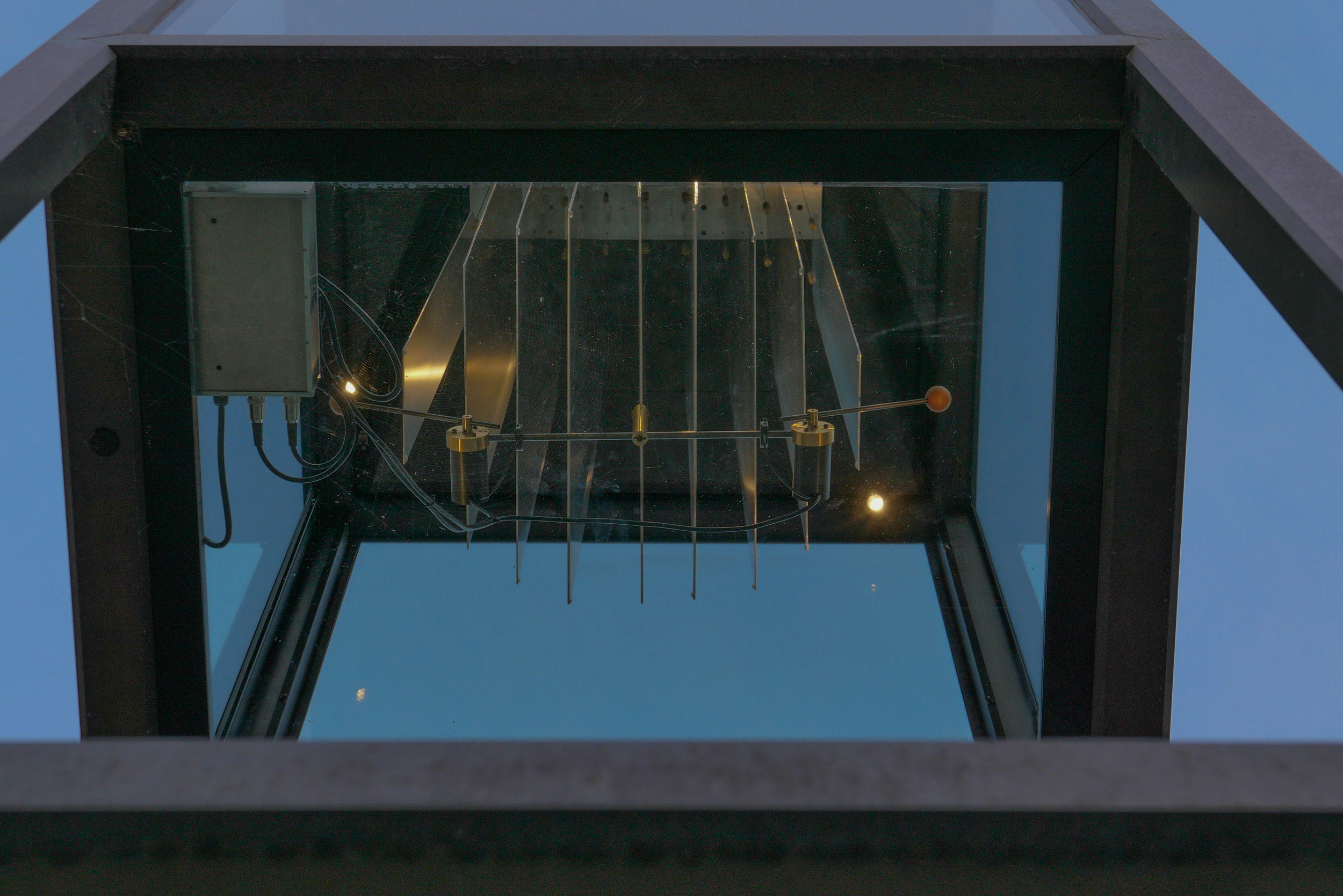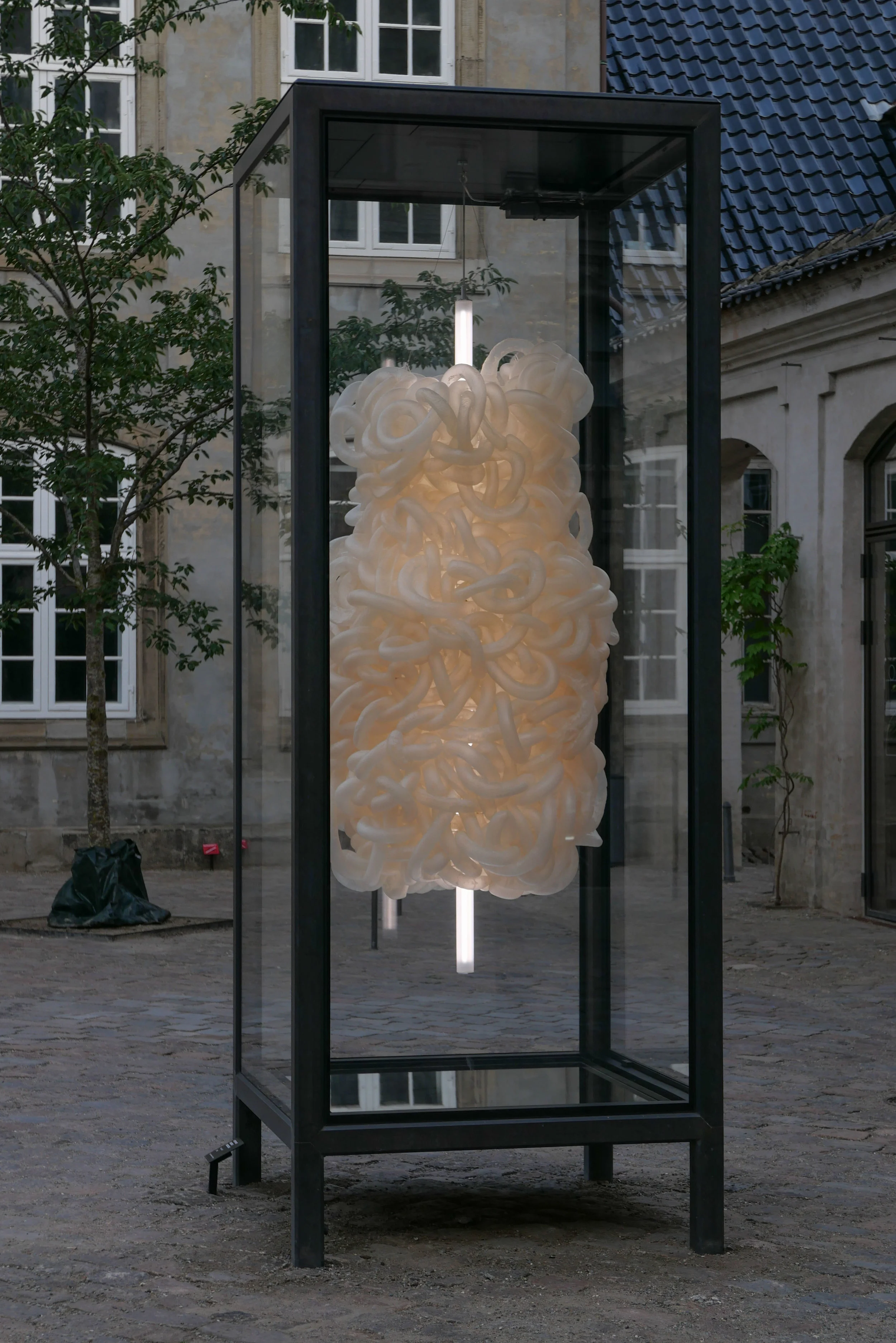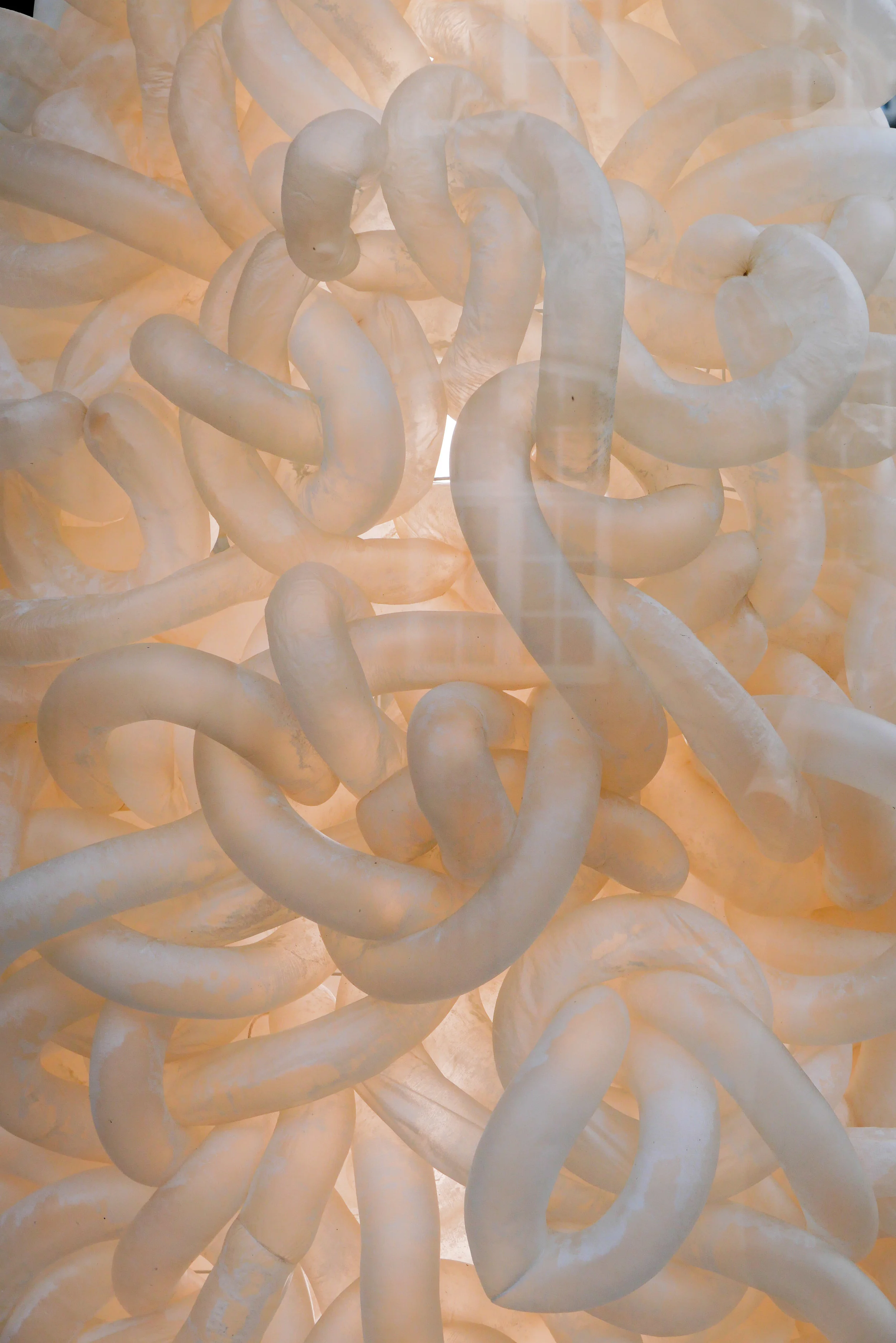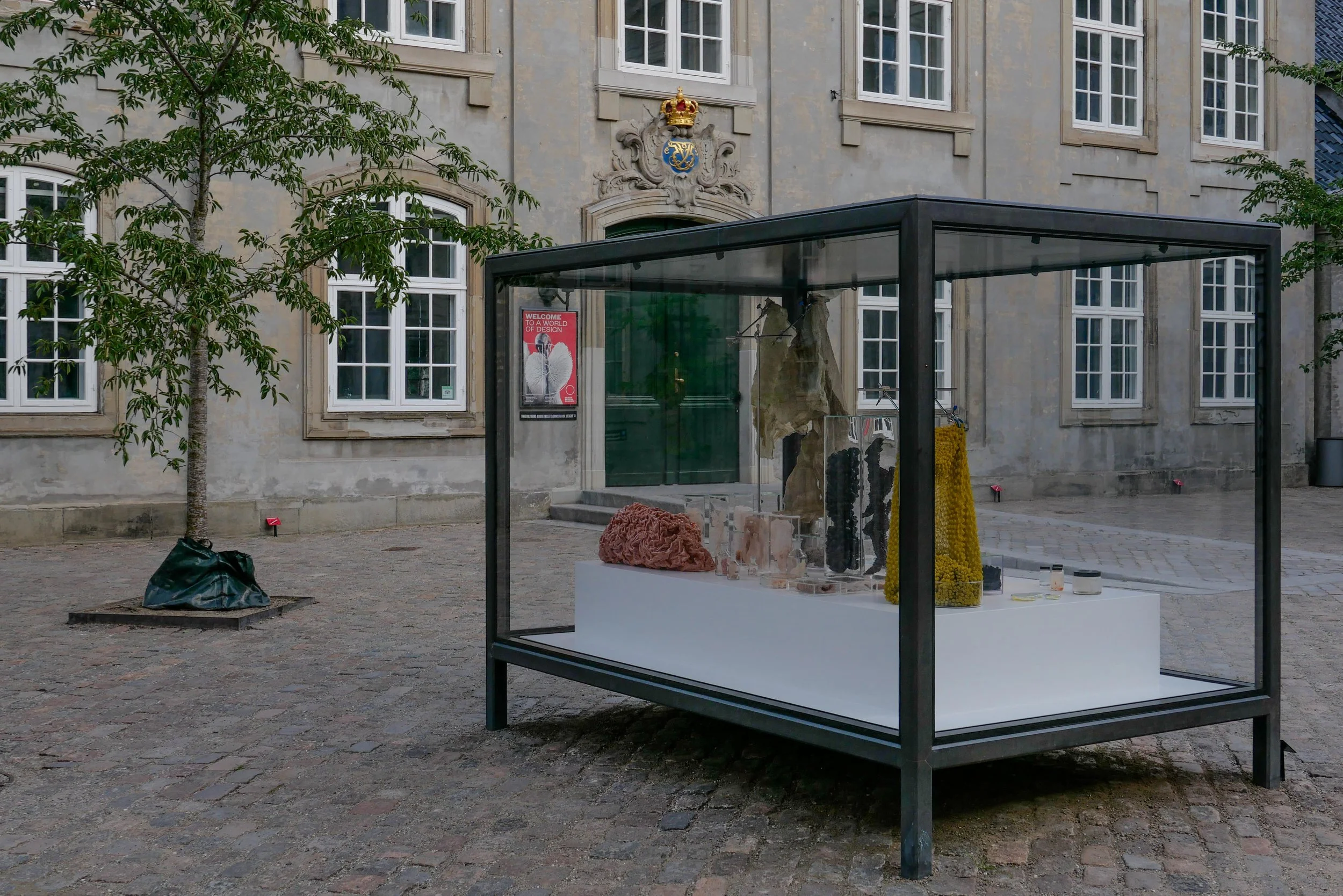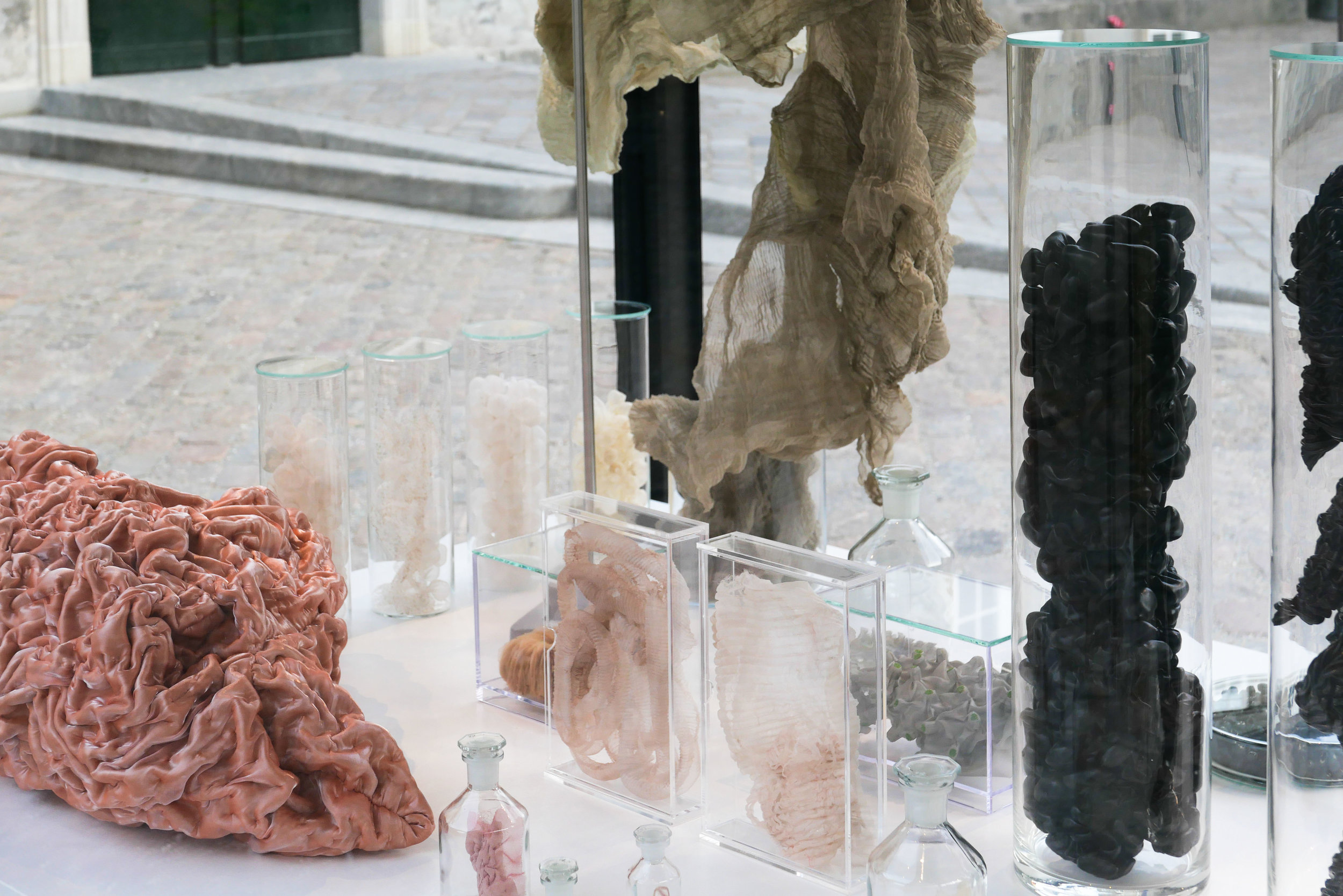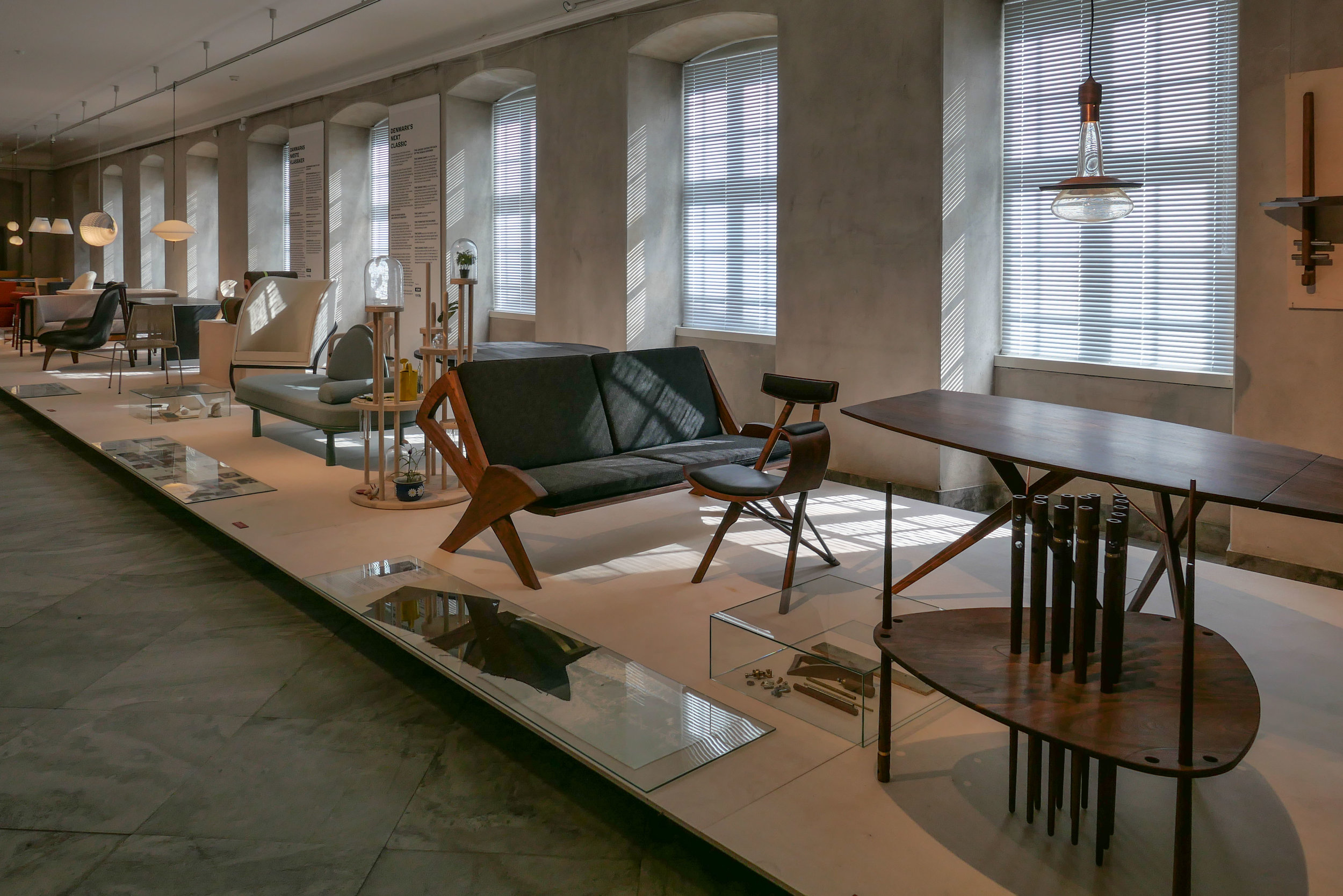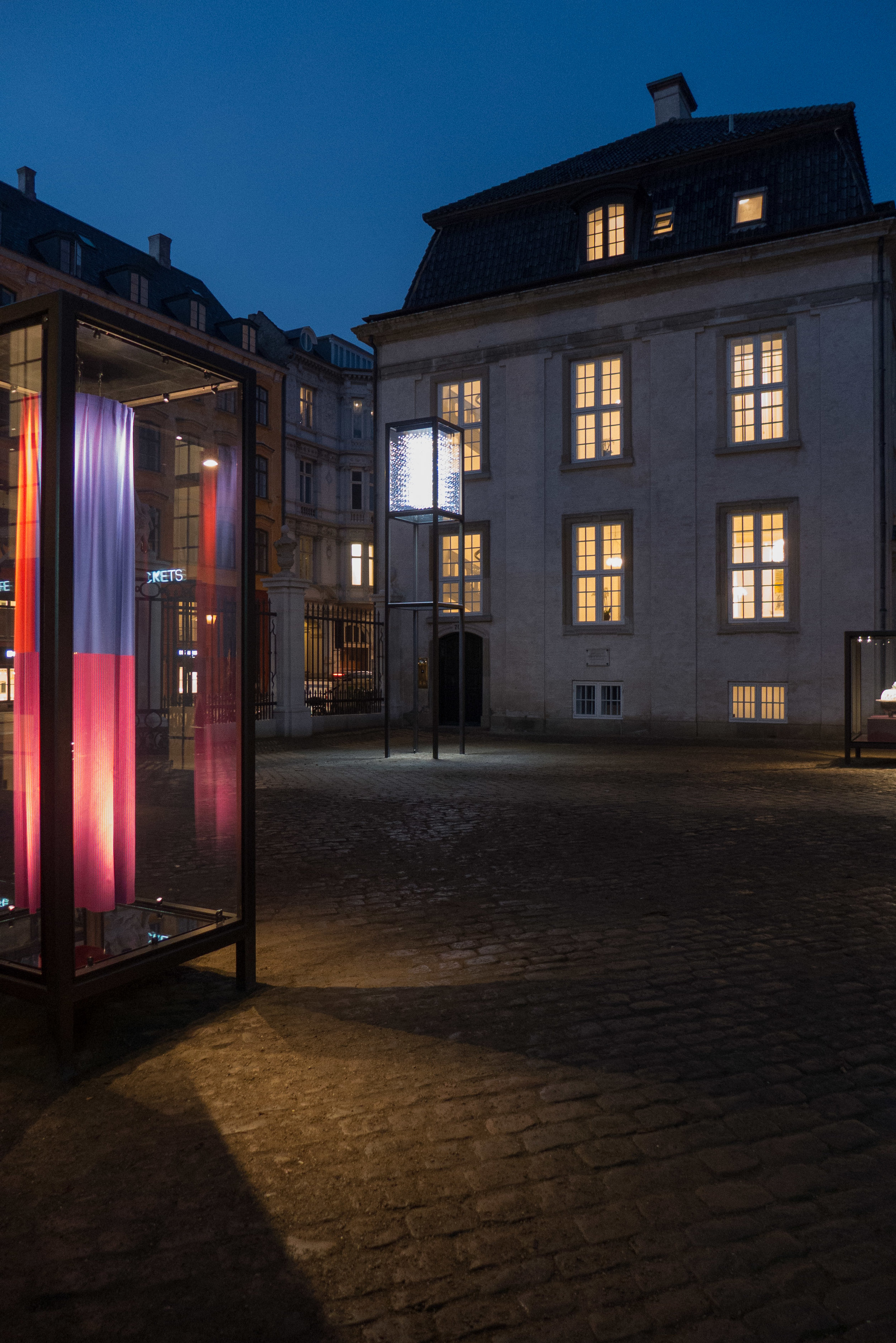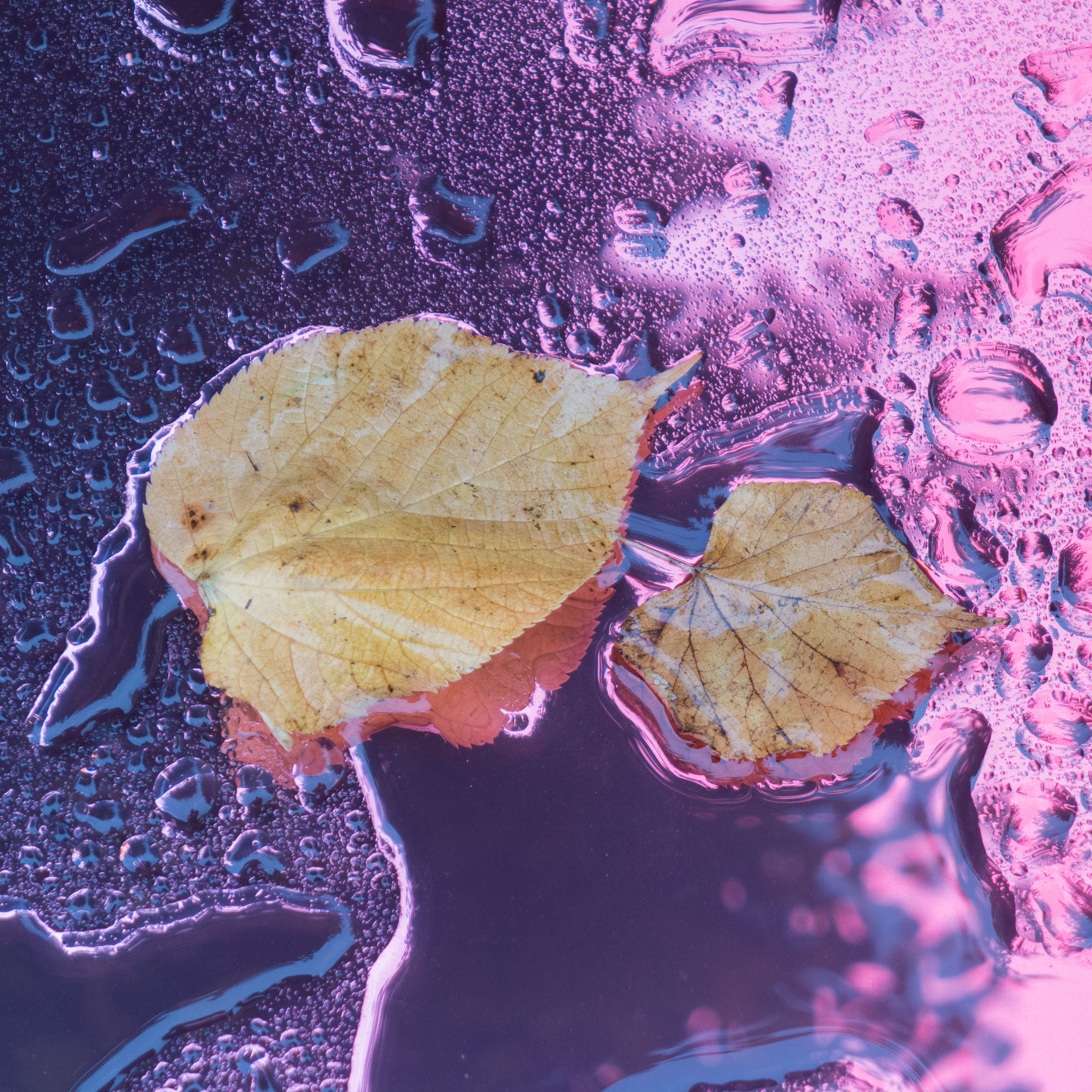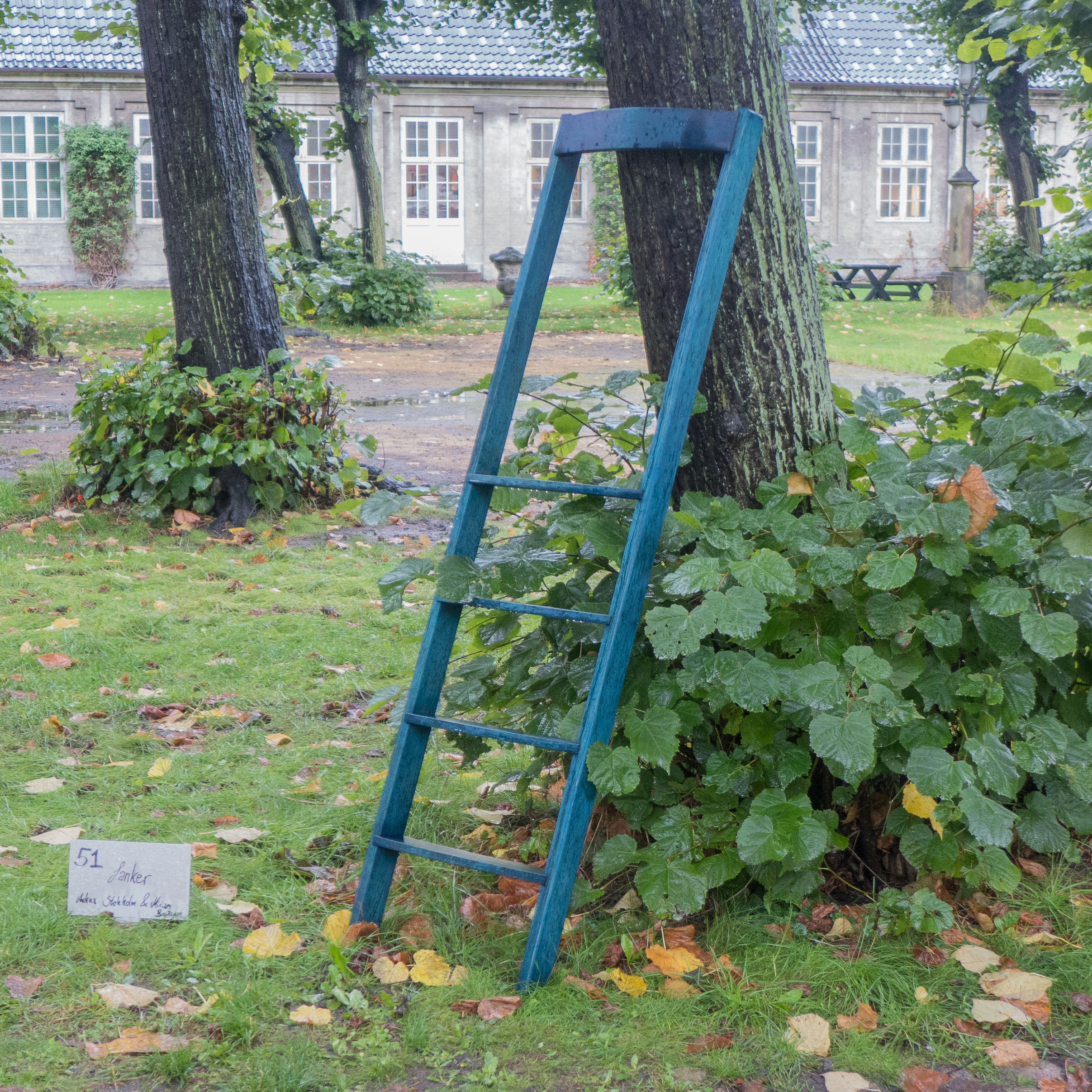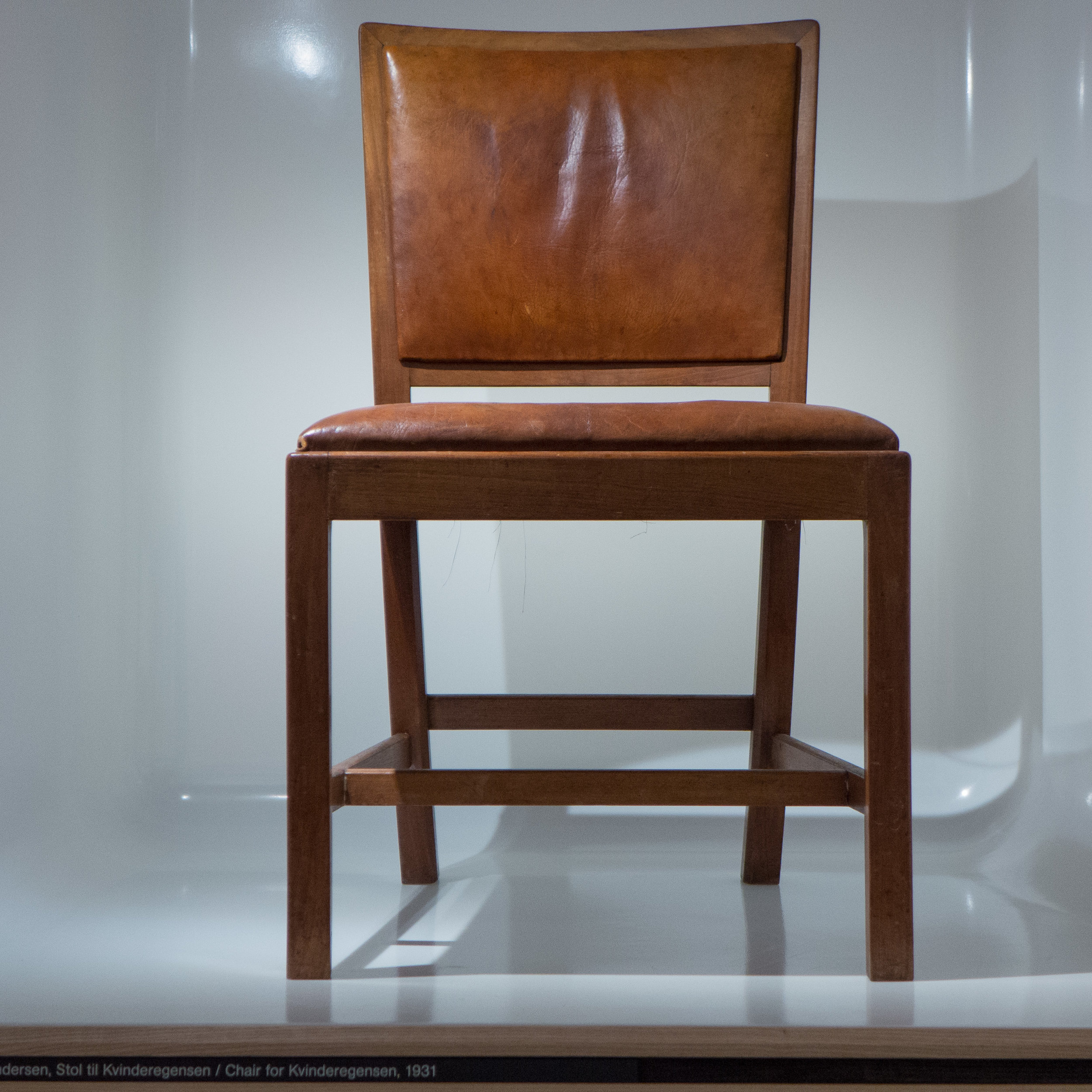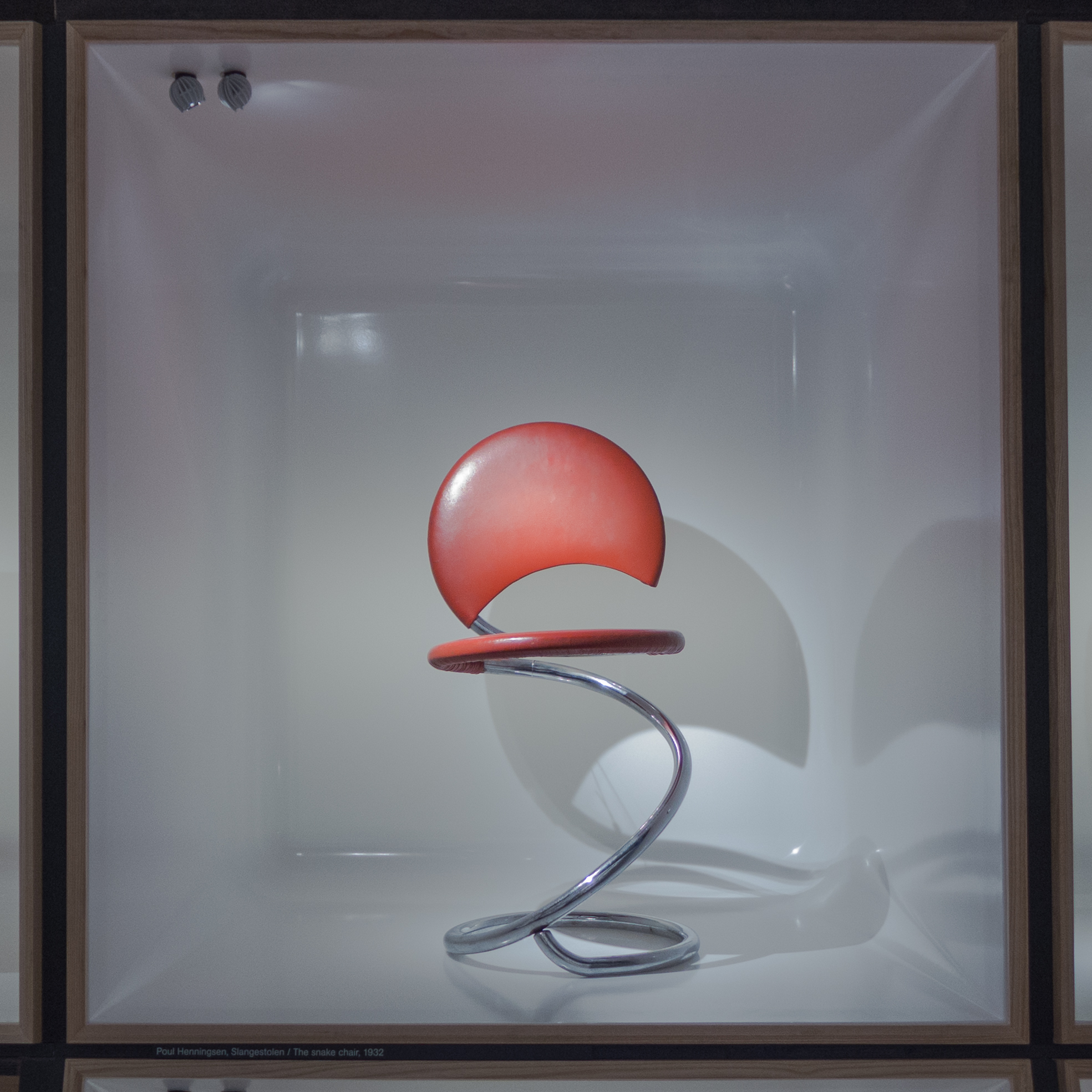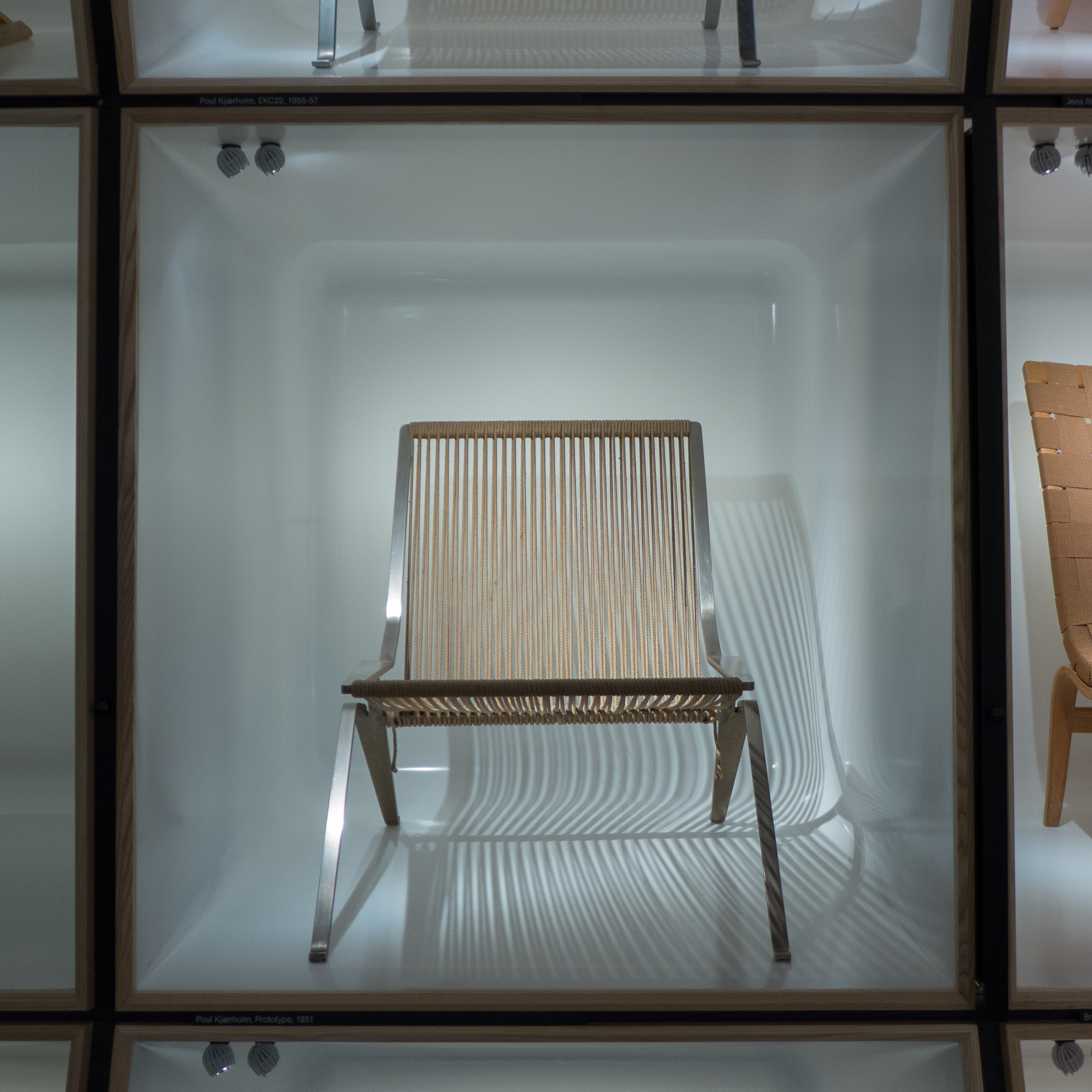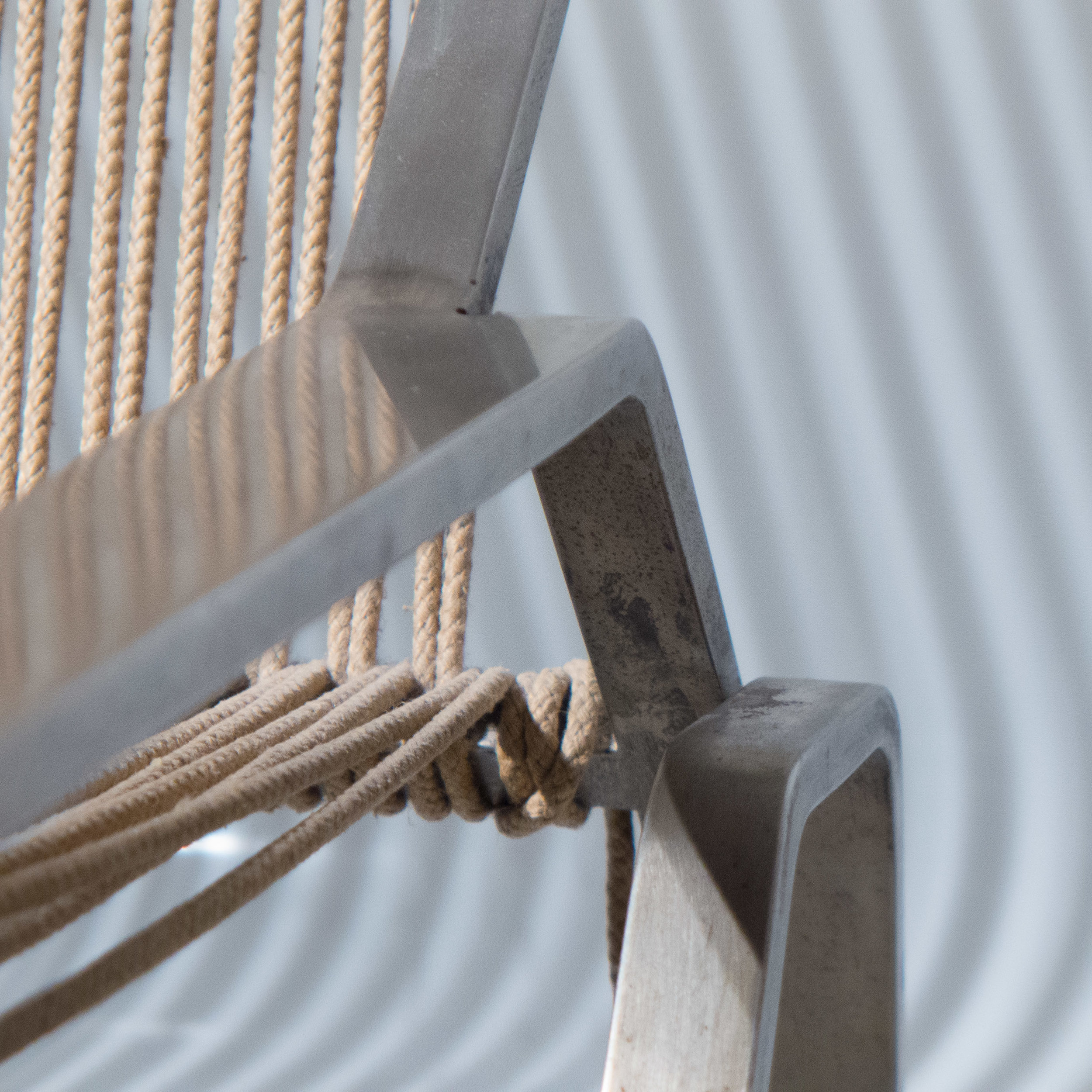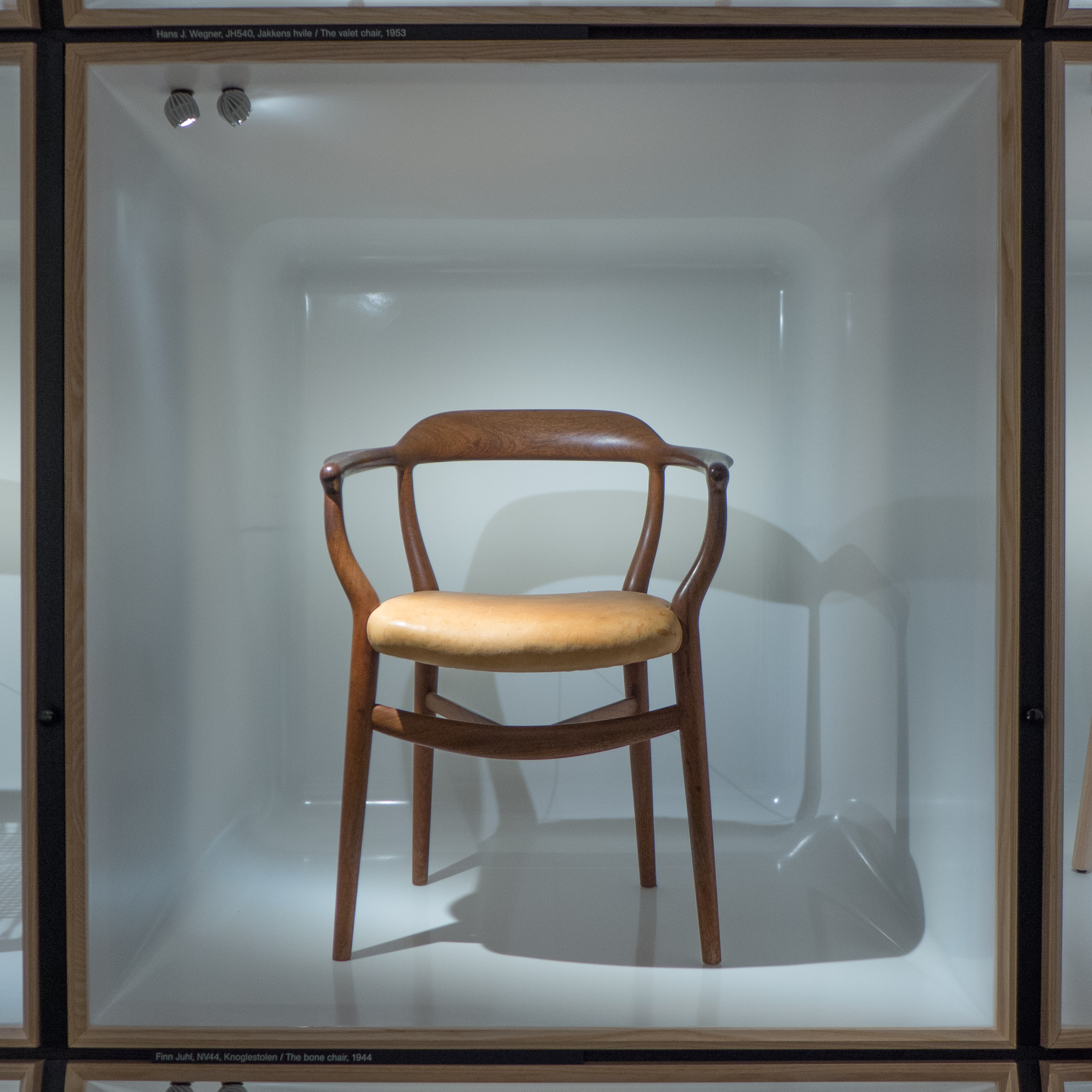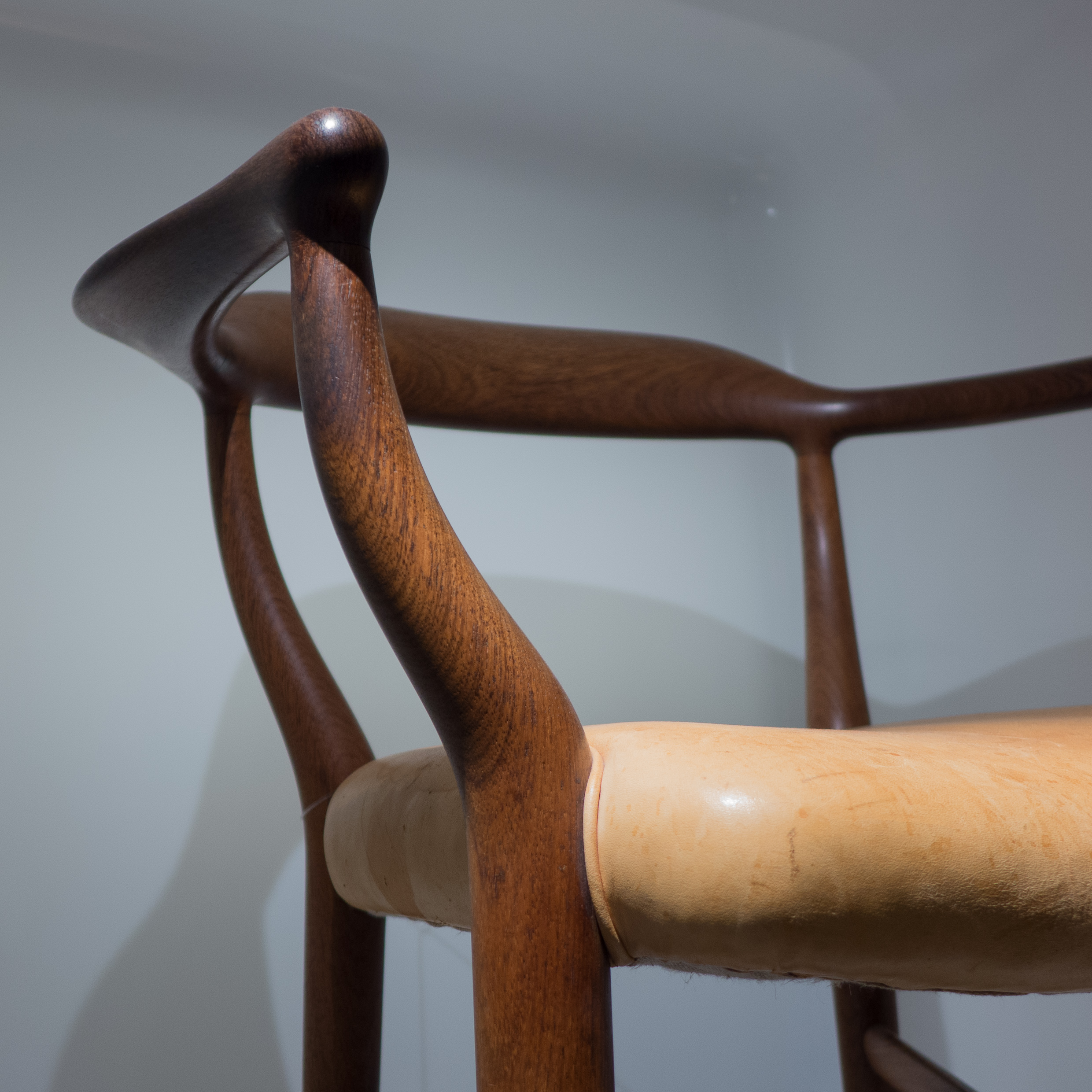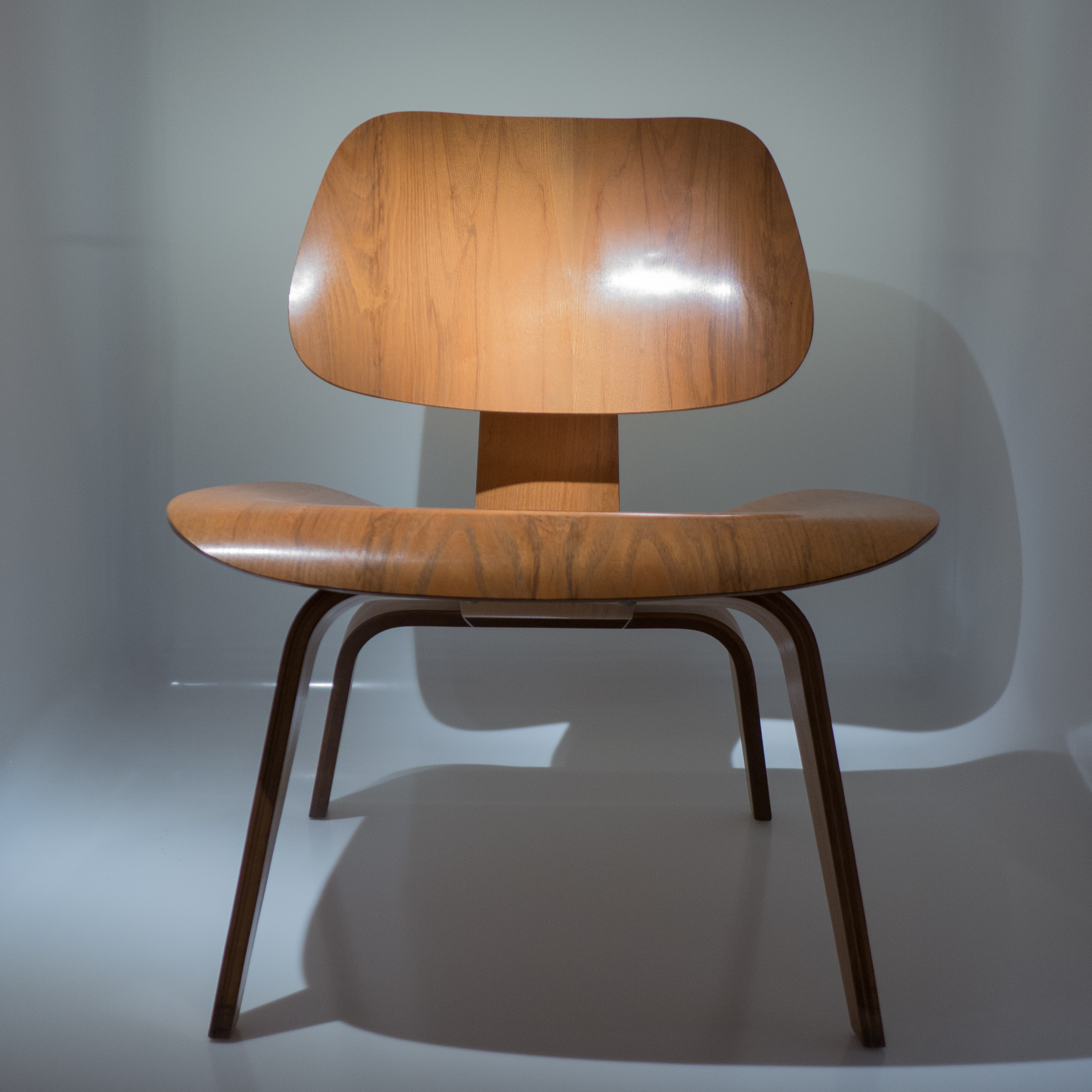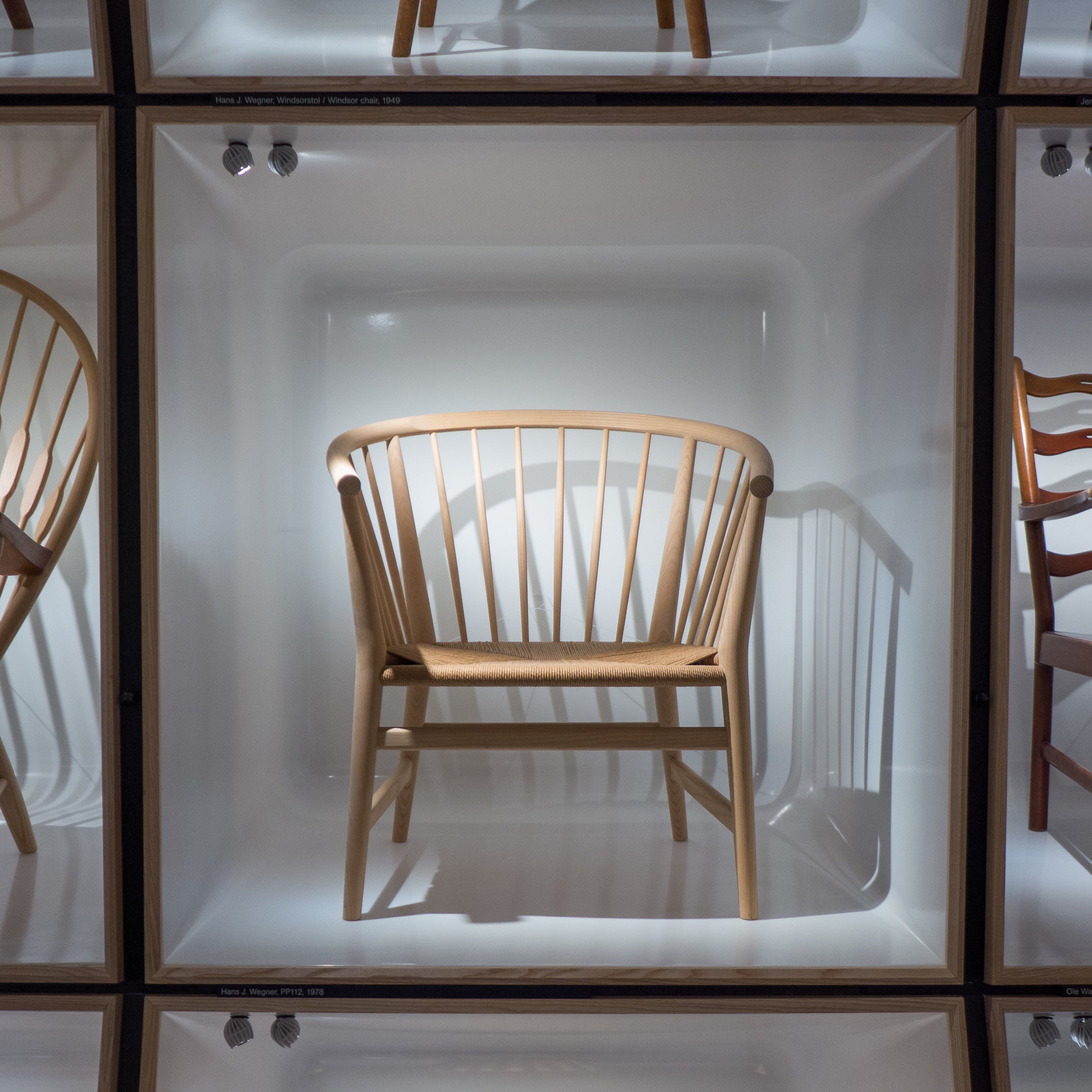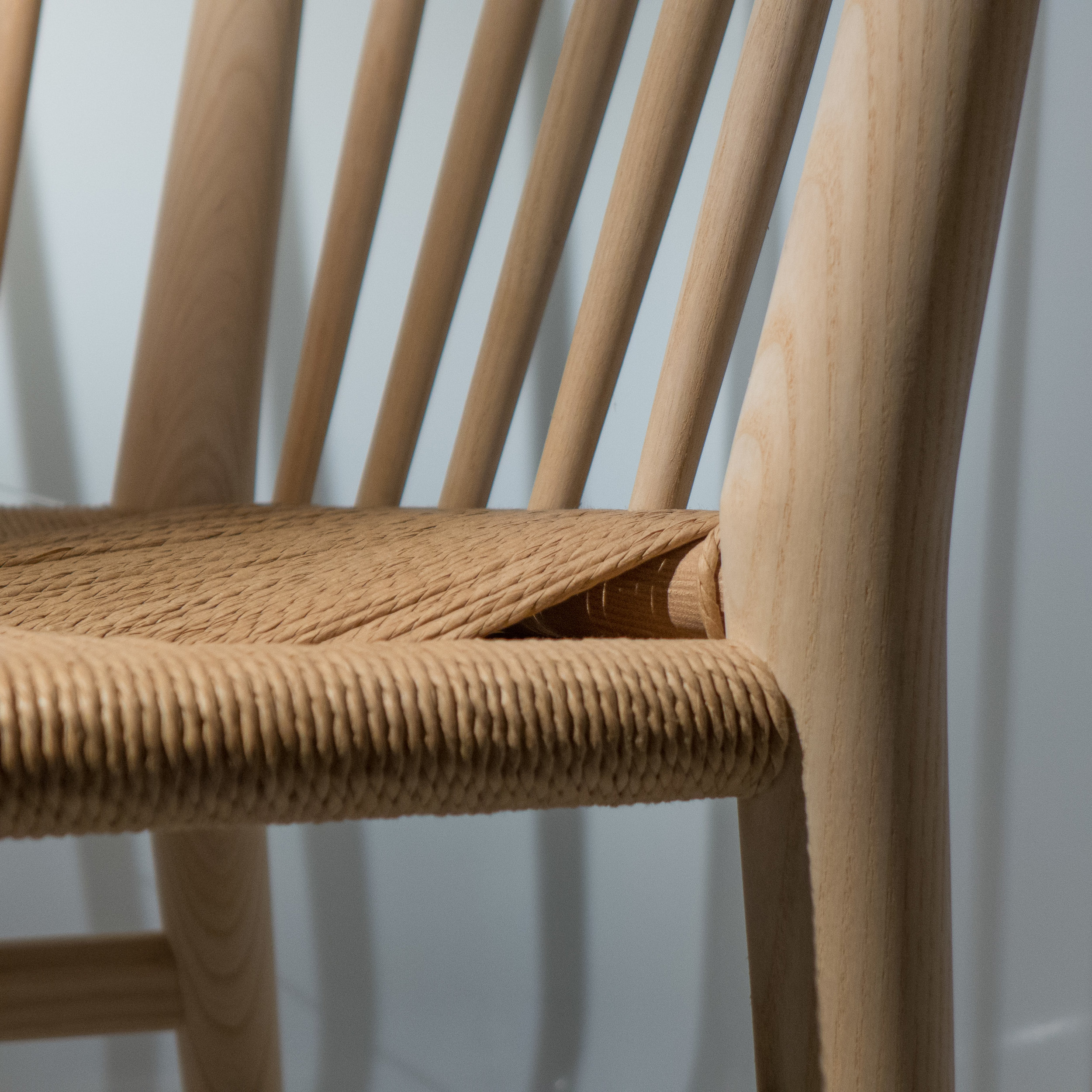An incredible exhibition has just opened at Designmuseum Danmark in Copenhagen.
Unfolds celebrates the 25th anniversary of the Danish Cabinetmakers’ Association with twenty five works that the museum describes as unique. The theme for the exhibition is the cube but unique barely begins to describe the ingenuity, the skill and the craftsmanship on display here that is astounding because the pieces also involve the visitor as works have to be twisted or spun or, as the title of the exhibition implies, unfolded to reveal what is inside.
There is a cabinet of curiosities suspended from the ceiling and when you duck inside it is lined with small mirrored boxes that have to to be spun round so that as your image is fragmented more and more so the objects can be revealed. A large cube with a chess board inlaid on the top can be tumbled over to reveal backgammon on the other side but the draw holding the playing pieces only opens to give the right pieces for the right board depending on which way up you have set it. There is a stark, dark, monumental box, that is a variation on the principle of Russian dolls but here the contents are a whole series of modern stylised rocking horses each smaller than the one before.
There is what appears to be a solid cube, small, beautifully made, with inset lines that divide each side into nine but as you unlock a draw on one side and open it and then push it back in, because it is empty, the tight fit means that another draw slides open on the other side as air is pushed through the interior of the box and then when that is pushed in another box emerges from the top. And so on and so on. Another piece has two solid cubes each with a funnel on the top for a silver ball that is dropped in to follow a hidden maze inside that you negotiate by twisting and turning the cube but you have to listen to check as it drops from one level to another and there is a clock and a clipboard to record the time it took you to complete the puzzle when the ball drops into a trough at the bottom.
Some of the pieces explore the tactile qualities of bark or one piece has tightly but irregularly packed cubes of dark smoked wood that you are asked to feel before pushing a silver button to open a draw inside suspended below quivering enamelled flowers.
There is a giro-like arrangement of a complex openwork cube within a cube filled with a narrow wooden trackway, made in different colours of wood, along which a silver ball runs as you turn the whole thing to set it going on a miniature but never-ending roller coaster and you try to follow the ball as it runs around or spins in a funnel before dropping onto the next section of track or it has to be followed by the odd clicking noises it makes out of sight in some sections.
As this is the silver anniversary each piece has some part in silver so there is a box that includes a spoon in plum wood but silver plated.
The piece that absorbed me for most time has a series of small, beautifully-made boxes, set within a large box and as you take off each lid in turn there is a piece of aromatic wood inside and there is a miniature plane so, if the smell isn’t strong enough, you can revive it by shaving off small slivers and each wood is identified with a number to check against a key list. Normally I would try and identify Oregon pine from its distinct colour and the grain but here I realised it has a quintessentially pine smell - it is very very pine - but that is odd because, despite the commonly used name, it’s not actually a pine but a fir …. and it was the first time I have held and could smell a piece of juniper wood so I now want something in juniper. Someone should write a book about the different smells of different craft workshops and their materials.
Craftsmen get obsessed and completely absorbed in their work but this is the first exhibition I can remember where you can see all the visitors to a museum become completely absorbed and lost in the works of craftsmen.
the exhibition continues at Designmuseum Danmark until 14 May 2017

